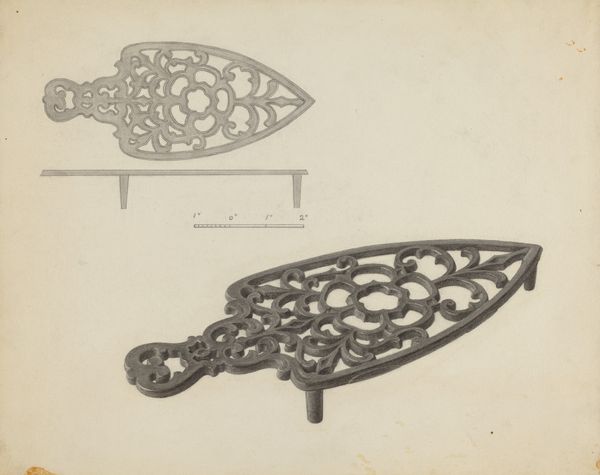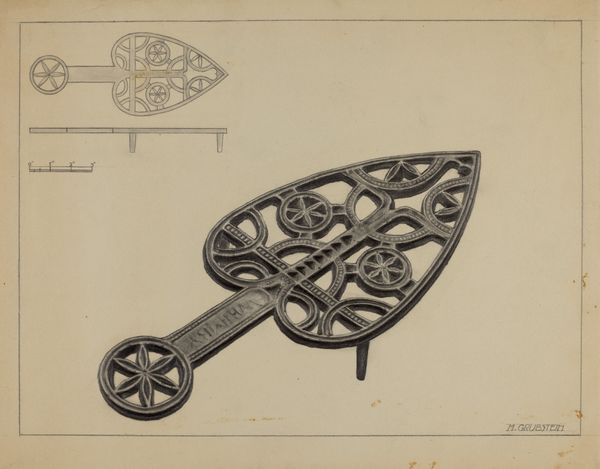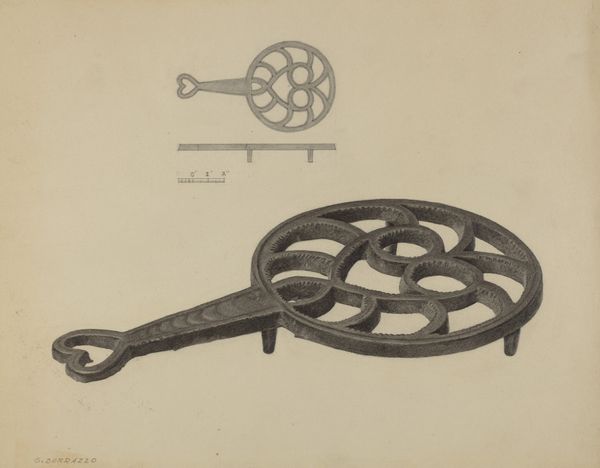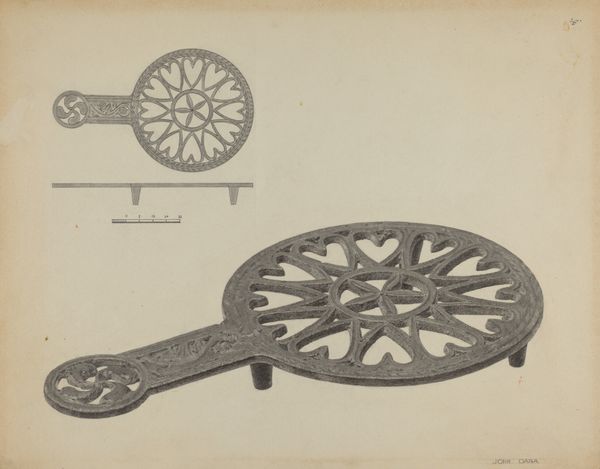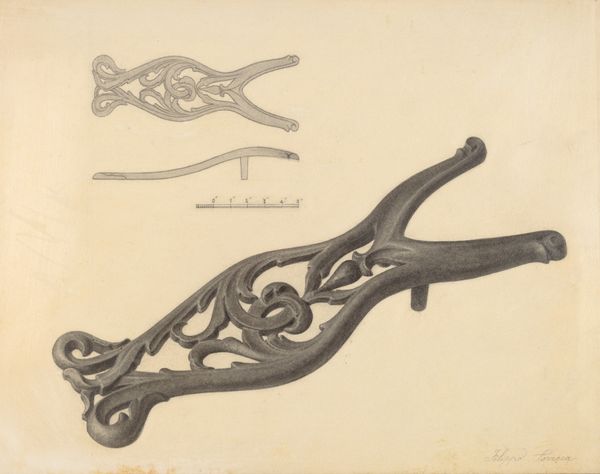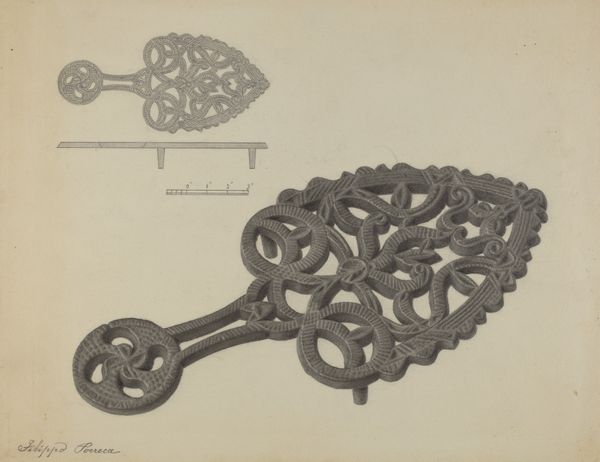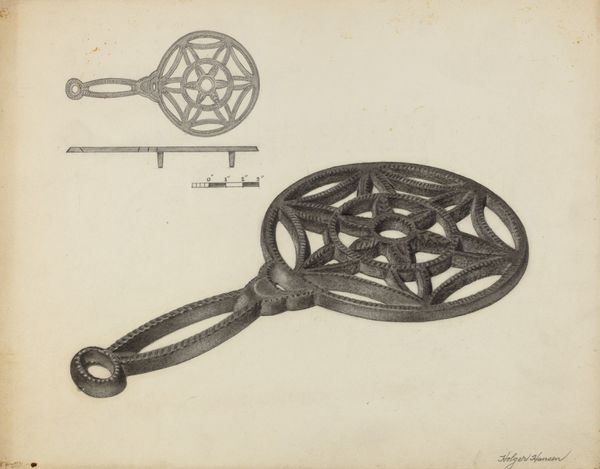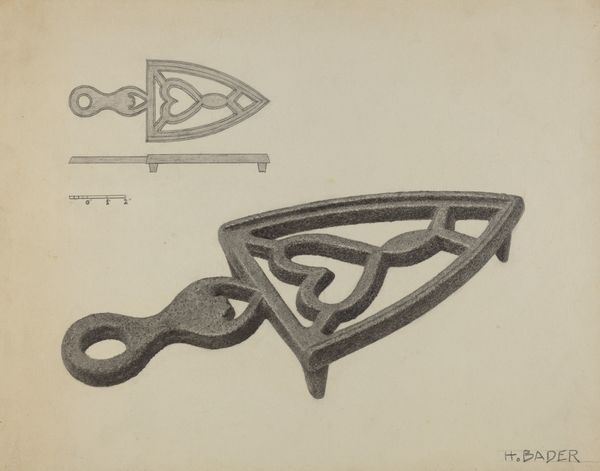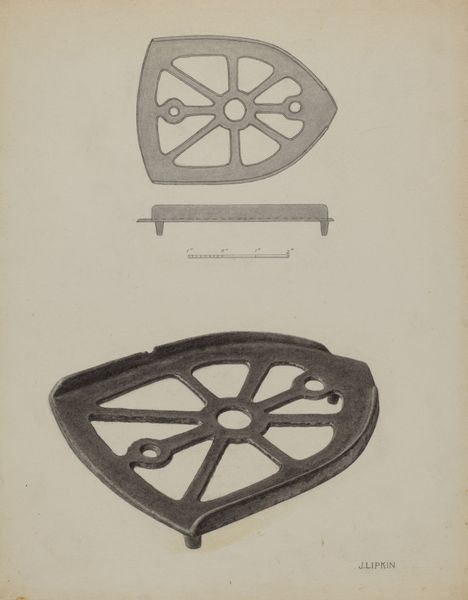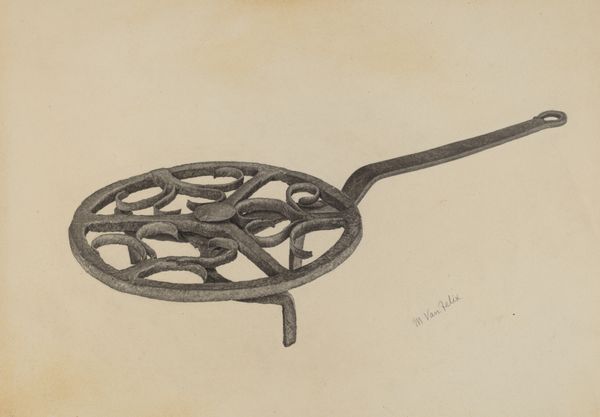
drawing, pencil
#
drawing
#
geometric
#
pencil
Dimensions: overall: 22.5 x 28.5 cm (8 7/8 x 11 1/4 in.) Original IAD Object: 8 3/4" long; 3 7/8" wide
Copyright: National Gallery of Art: CC0 1.0
Curator: Here we have Jack Staloff’s pencil drawing, titled "Flat-iron Holder," created around 1937. The rendering focuses on the detailed design of the trivet, presented in two scales against a blank ground. Editor: It's so meticulous! The detail gives this humble object an almost reverential feel. There’s something soothing about the geometric repetition within the floral and circular motifs. Curator: Right. Everyday objects were often elevated through design in the 1930s, reflecting values placed on craftsmanship during periods of economic hardship. The geometric forms, the floral symbols...it feels linked to earlier decorative art traditions. Editor: Precisely! Those swirling shapes have this almost hypnotic quality, which in some cultures have stood for transformation and cyclical movement of life, all surrounding that central floral form which for so long has suggested natural cycles and even domestic comfort. Curator: I see what you mean, with its obvious utility but imbued with subtle visual significance. It speaks of pride in even the most mundane of tasks and possessions, an attempt to bring beauty to a very routine chore of managing the household. Editor: And think about it— the iron itself would have represented transformation, heat altering fabric to create new shapes and possibilities. This trivet, then, isn't just holding something hot; it is also holding a certain type of symbolic and practical weight. Curator: An interesting connection! It definitely shifts how we perceive the social function of even these modest, practical tools in everyday life during this era. The choice to create a precise technical drawing highlights this elevation, doesn’t it? Editor: Definitely. In viewing this common tool from the past as something sacred to present through geometric and detailed figures it transforms, right here, into a fascinating object and cultural reflection. Curator: Indeed, offering a window into how we assigned symbolic meaning to practical labor. Editor: A perspective I would never have expected from something so seemingly banal.
Comments
No comments
Be the first to comment and join the conversation on the ultimate creative platform.
